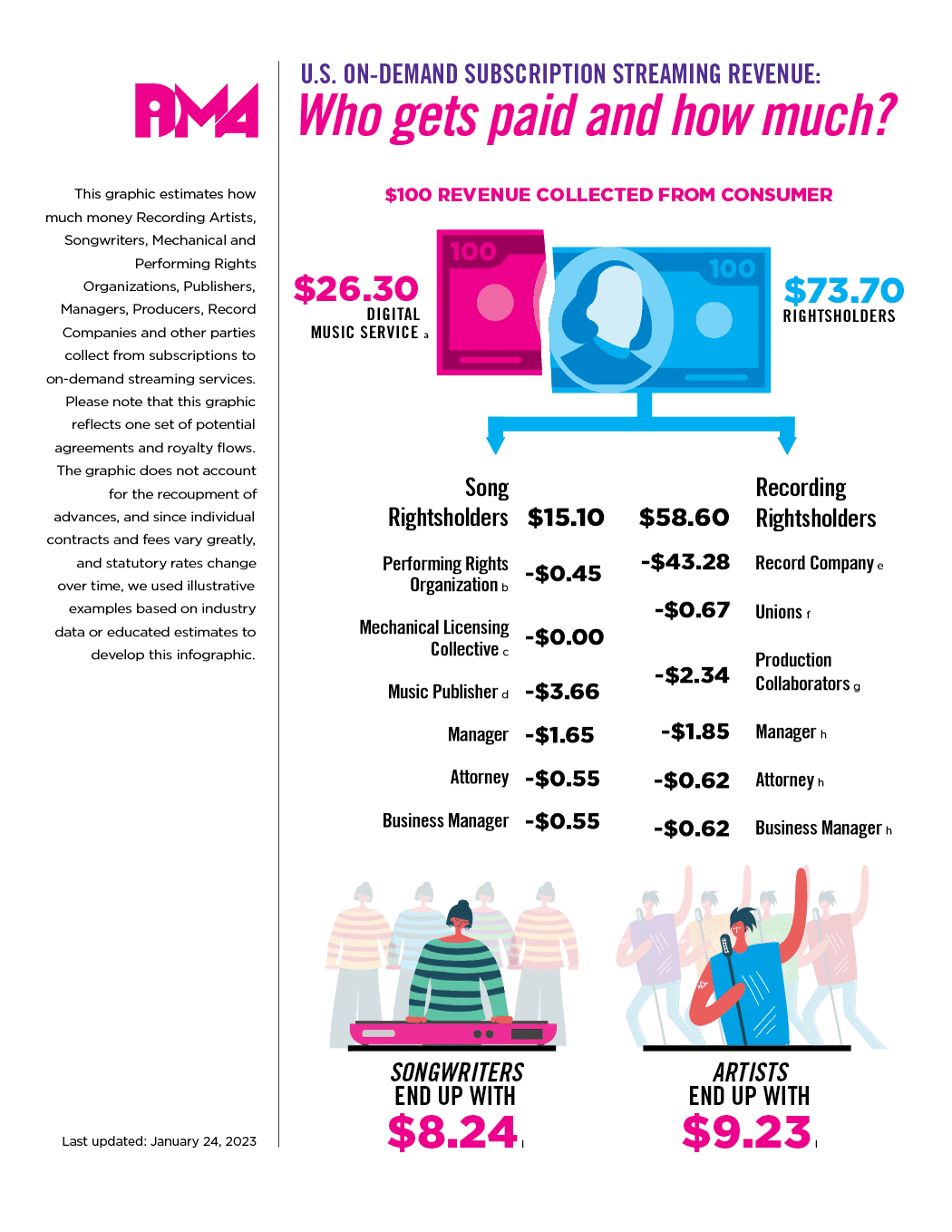U.S. On-Demand Subscription Streaming Revenue: Who gets paid and how much?
January 17, 2023 | Research & Reports
The below graphic estimates how much money Recording Artists, Songwriters, Mechanical and Performing Rights Organizations, Publishers, Managers, Producers, Record Companies and other parties collect from subscriptions to on-demand streaming services.
Please note that this graphic reflects one set of potential agreements and royalty flows. The graphic does not account for the recoupment of advances, and since individual contracts and fees vary greatly, and statutory rates change over time, we used illustrative examples based on industry data or educated estimates to develop this infographic.
